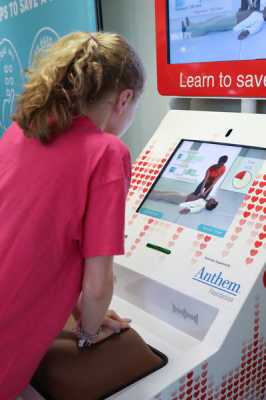Author Interviews, Columbia, Heart Disease, Mediterranean Diet, Women's Heart Health / 13.03.2020
Components of Mediterranean Diet Linked to Reduced Inflammatory Markers
MedicalResearch.com Interview with:
Dr. Riddhi Shah, PhD
AHA SFRN Postdoctoral Research Fellow
Division of Cardiology
Columbia University Medical Center
New York, New York
MedicalResearch.com: What is the background for this study?
Response: The Mediterranean Diet, characterized by higher intakes of plant foods including plant proteins, monounsaturated fat, fish, and lower consumption of animal products and saturated fat, has long been associated with reduced cardiovascular risk and greater longevity, but the molecular mechanisms underlying these associations have not been fully elucidated.
We evaluated associations of an Alternate Mediterranean Diet Score, reflective of adherence to this diet pattern and adapted for US populations, and its components with markers of endothelial inflammation directly measured in endothelial cells harvested from women, including oxidative stress, nuclear factor kappa B (NFκB), and endothelial nitric oxide synthase (eNOS) gene expression.
(more…)



 Deborah M Eaton
Doctorate Student / Research Assistant
Temple University
MedicalResearch.com: What is the background for this study?
Response: Heart failure (HF) with preserved ejection fraction (HFpEF) accounts for approximately 50% of cases of HF and to date clinical trials with HFpEF patients have failed to produce positive outcomes. Part of this is likely due to the lack of HFpEF animal models for preclinical testing. Our lab addressed this gap in knowledge by developing an animal model that mimics critical features of the human HFpEF phenotype. We performed an in-depth cardiopulmonary characterization highlighting that the model has characteristics of human disease. We then tested the effects of a pan-HDAC inhibitor, vorinostat/SAHA, in collaboration with Dr. Timothy McKinsey, who is an expert in HDAC inhibitors and recently published work1 that laid the foundation for this study.
Deborah M Eaton
Doctorate Student / Research Assistant
Temple University
MedicalResearch.com: What is the background for this study?
Response: Heart failure (HF) with preserved ejection fraction (HFpEF) accounts for approximately 50% of cases of HF and to date clinical trials with HFpEF patients have failed to produce positive outcomes. Part of this is likely due to the lack of HFpEF animal models for preclinical testing. Our lab addressed this gap in knowledge by developing an animal model that mimics critical features of the human HFpEF phenotype. We performed an in-depth cardiopulmonary characterization highlighting that the model has characteristics of human disease. We then tested the effects of a pan-HDAC inhibitor, vorinostat/SAHA, in collaboration with Dr. Timothy McKinsey, who is an expert in HDAC inhibitors and recently published work1 that laid the foundation for this study. 



















